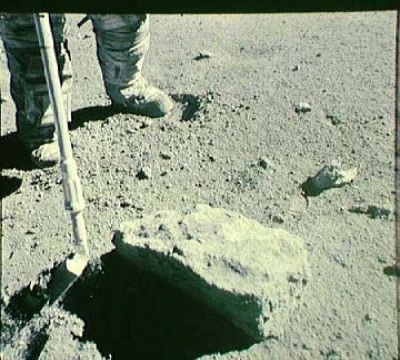The moon is likely very dry in its interior according to a new study.
The question of the moon’s moistness matters because the amount of water and other volatile (easily evaporated) elements and compounds provide clues to the moon’s history and how it was formed, according to Science daily.
“It’s been a big question whether the moon is wet or dry. It might seem like a trivial thing, but this is actually quite important,” said James Day, a geochemist and the leading author of the study. “If the moon is dry it would be consistent with the formation of the moon in some sort of cataclysmic impact event that formed it,” Day said.
The results in this paper suggest that when the moon formed it was “very, very, hot,” Day said. “Essentially an ocean of magma.”
Day and his coauthors believe it would have been so hot that any water, or other compounds and elements that are volatile under conditions on the moon, such as zinc, would have evaporated very early in the moon’s history.
They arrived at this conclusion after analyzing fragments of the “Rusty Rock,” a rock collected from the moon’s surface during the Apollo 16 mission in 1972.
“It’s the only rock from the moon that came back with what appeared to be rust on its outer surfaces,” Day said.
The implications of the Rusty Rock have mystified scientists for a long time — water is one of the essential ingredients of rust, so where could that water have come from? Some speculated the water could have been terrestrial, but further tests showed the rock and the rust were lunar in origin.
The new chemical analyses Day and his team applied to the Rusty Rock revealed that the rock’s composition is consistent with it coming from a very dry interior.
“It’s a bit of a paradox,” Day said. “It’s a wet rock that comes from a very dry interior part of the moon.”
Day found that the rust on the Rusty Rock is full of lighter isotopes of zinc, meaning it’s probably the product of the zinc condensing on the moon’s surface after evaporating during the sweltering period of the moon’s formation.
“Zinc is a volatile element, so it behaves a bit like water under conditions of moon formation,” Day said. “It’s something like clouds forming from the ocean; the clouds are rich in light oxygen isotopes, and the ocean is rich in heavy oxygen isotopes.”
In the same way, he said, the interior of the moon must be enriched in the heavy isotopes and have been depleted in the light isotopes and volatile elements. Meaning: dry.
“I think the Rusty Rock was seen for a long time as kind of this weird curiosity, but in reality, it’s telling us something very important about the interior of the moon,” Day said. “These rocks are the gifts that keep on giving because every time you use a new technique, these old rocks that were collected by Buzz Aldrin, Neil Armstrong, Charlie Duke, John Young, and the Apollo astronaut pioneers, you get these wonderful insights.”
But the insights Day has gleaned from one lunar artifact run contrary to recently published results from another. Scientists analyzed glass deposits found on the moon’s surface and concluded that the presence of water in these deposits suggests that the moon’s interior is actually wet.
“Their study says that all of the glass bead deposits on the lunar surface are ‘wet,’ which is a great observation. However, they cannot elucidate the mechanism of their formation,” he said.
N.H.Kh

